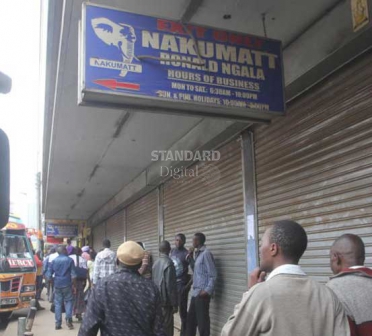×
The Standard e-Paper
Smart Minds Choose Us

Two of Kenya’s largest retail supermarkets have closed two of their stores within a fortnight while the third one is still struggling to sell its assets to turn around its fortunes, exposing the woes facing the retail industry.
Nakumatt has shut its Ronald Ngala branch, while Tuskys Supermarket closed its Sheikh Karume branch both in Nairobi.